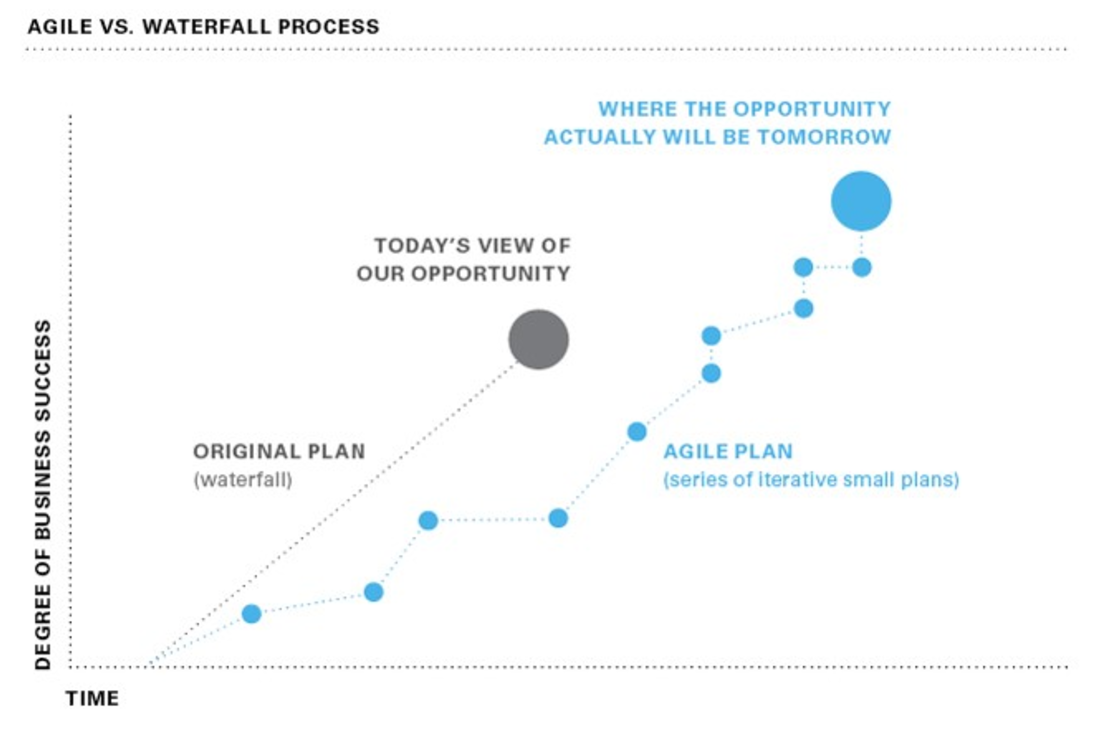Scott Brinker, editor of the Chief Marketing Technologist blog and Chair of MarTech conference, released Hacking Marketing in early March. The book’s popularity has taken off and is likely on its way to becoming a bestseller.
If you haven’t had a chance to read Hacking Marketing yet, I’d highly recommend it. From beginning to finish the book has a tonne of new and useful information. The part that resonated with me the most was Brinker’s emphasis on agile versus waterfall marketing.
Agile vs Waterfall
Waterfall marketing refers to the traditional ‘Mad Men Don Draper’ approach to marketing where campaign creative is developed, marketing tactics are based on it, and then a (large, expensive) campaign is launched.
Agile marketing is less ‘campaign focused’ and is better suited for the digital marketing era. As opposed one big creative idea, numerous small marketing experiments are launched over a few large bets. Data is a collected from these marketing experiments and improvements are made on a daily or weekly basis. In agile marketing, marketing “campaigns” exist in constant beta mode.

Capitalize on agile marketing
Companies both large and small have woven an agile approach into their marketing methodology. In 2015, Dell implemented a Marketing Analytics Workbench that mined insights from numerous business intelligence tools and data sources. The Workbench allowed them to pinpoint patterns and make recommendations about marketing spend and activities. The changes lead to $5.3 million in incremental revenue. The Workbench allowed Dell’s marketing team to identify emerging marketing trends and deliver more personalized marketing programs.
What’s your next step?
Many marketers are stuck in the waterfall approach and will need to shift to agile in order to keep pace with industry changes. It’s arguable that agile marketing is already here. If you aren’t applying the agile approach to marketing soon, you’ll fall behind. Scott Brinker’s Hacking Marketing will help you close this gap in a big way.








